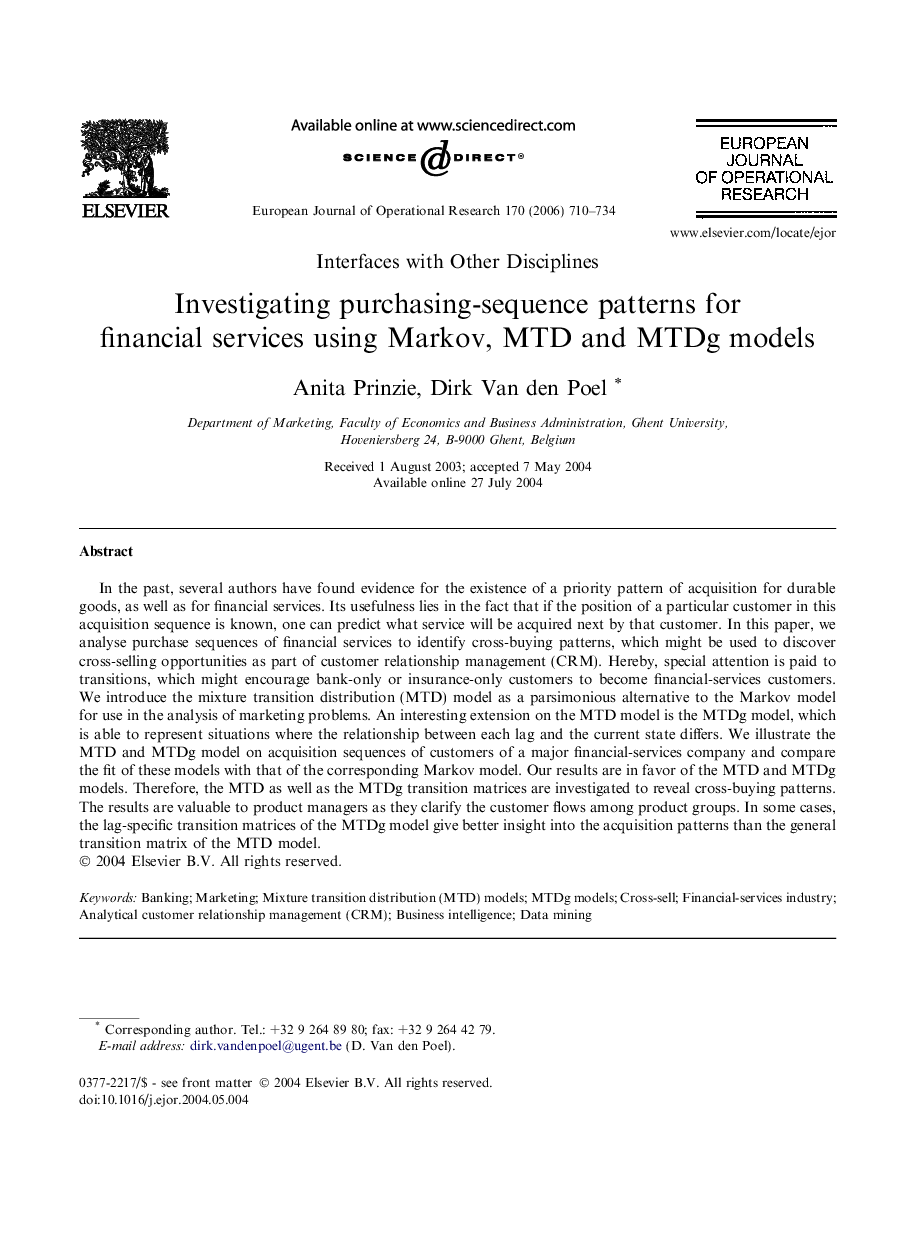| Article ID | Journal | Published Year | Pages | File Type |
|---|---|---|---|---|
| 482927 | European Journal of Operational Research | 2006 | 25 Pages |
In the past, several authors have found evidence for the existence of a priority pattern of acquisition for durable goods, as well as for financial services. Its usefulness lies in the fact that if the position of a particular customer in this acquisition sequence is known, one can predict what service will be acquired next by that customer. In this paper, we analyse purchase sequences of financial services to identify cross-buying patterns, which might be used to discover cross-selling opportunities as part of customer relationship management (CRM). Hereby, special attention is paid to transitions, which might encourage bank-only or insurance-only customers to become financial-services customers. We introduce the mixture transition distribution (MTD) model as a parsimonious alternative to the Markov model for use in the analysis of marketing problems. An interesting extension on the MTD model is the MTDg model, which is able to represent situations where the relationship between each lag and the current state differs. We illustrate the MTD and MTDg model on acquisition sequences of customers of a major financial-services company and compare the fit of these models with that of the corresponding Markov model. Our results are in favor of the MTD and MTDg models. Therefore, the MTD as well as the MTDg transition matrices are investigated to reveal cross-buying patterns. The results are valuable to product managers as they clarify the customer flows among product groups. In some cases, the lag-specific transition matrices of the MTDg model give better insight into the acquisition patterns than the general transition matrix of the MTD model.
